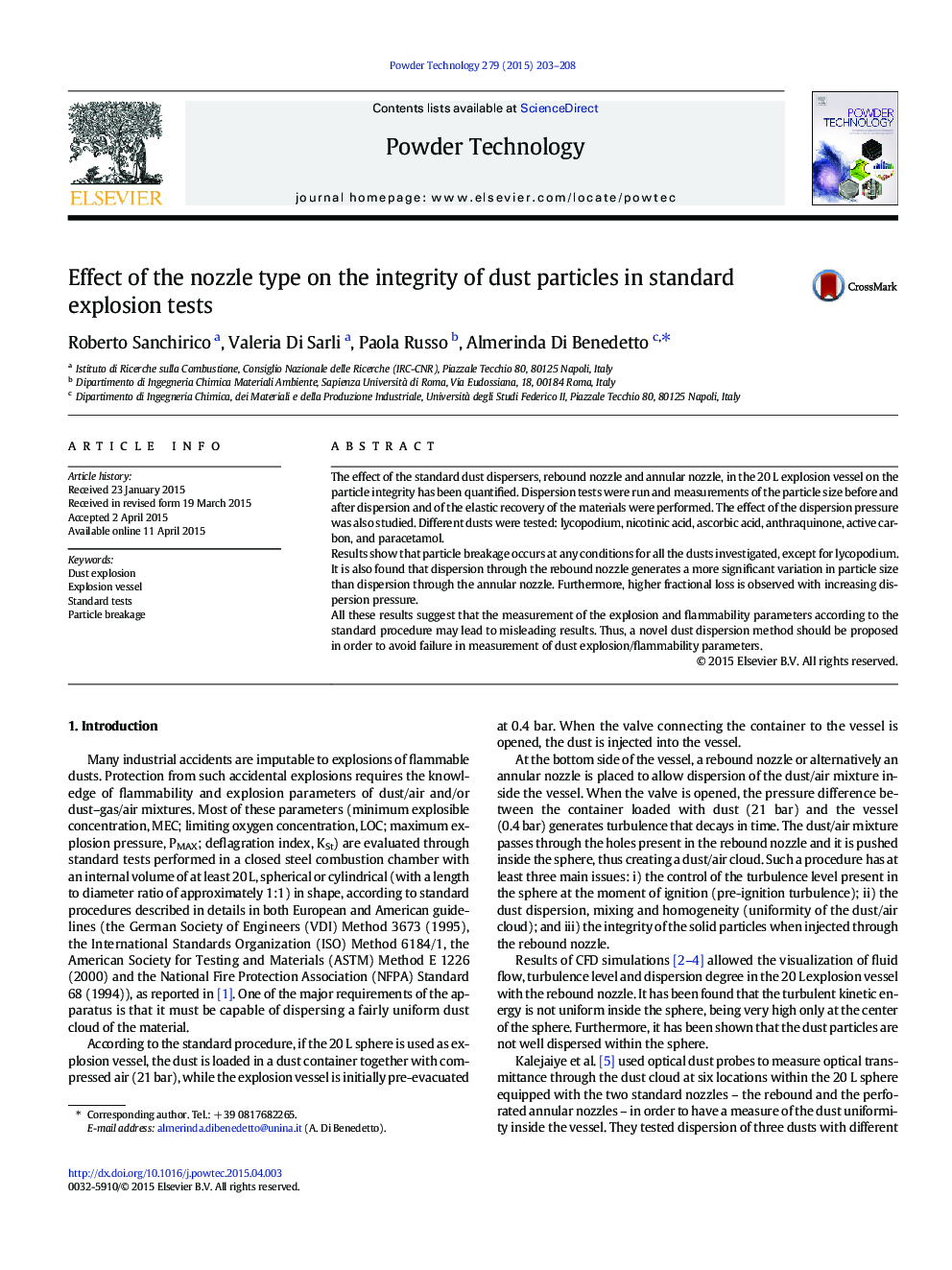| Article ID | Journal | Published Year | Pages | File Type |
|---|---|---|---|---|
| 235576 | Powder Technology | 2015 | 6 Pages |
•Dust dispersion tests in standard 20 L explosion vessel have been performed.•Dusts with different elastic recovery have been tested.•Dust particle size has been measured before and after dispersion.•Dispersion through the rebound nozzle generates a more significant change in particle size.•Higher fractional losses are observed with increasing pressure dispersion.
The effect of the standard dust dispersers, rebound nozzle and annular nozzle, in the 20 L explosion vessel on the particle integrity has been quantified. Dispersion tests were run and measurements of the particle size before and after dispersion and of the elastic recovery of the materials were performed. The effect of the dispersion pressure was also studied. Different dusts were tested: lycopodium, nicotinic acid, ascorbic acid, anthraquinone, active carbon, and paracetamol.Results show that particle breakage occurs at any conditions for all the dusts investigated, except for lycopodium. It is also found that dispersion through the rebound nozzle generates a more significant variation in particle size than dispersion through the annular nozzle. Furthermore, higher fractional loss is observed with increasing dispersion pressure.All these results suggest that the measurement of the explosion and flammability parameters according to the standard procedure may lead to misleading results. Thus, a novel dust dispersion method should be proposed in order to avoid failure in measurement of dust explosion/flammability parameters.
Graphical abstractFigure optionsDownload full-size imageDownload as PowerPoint slide
